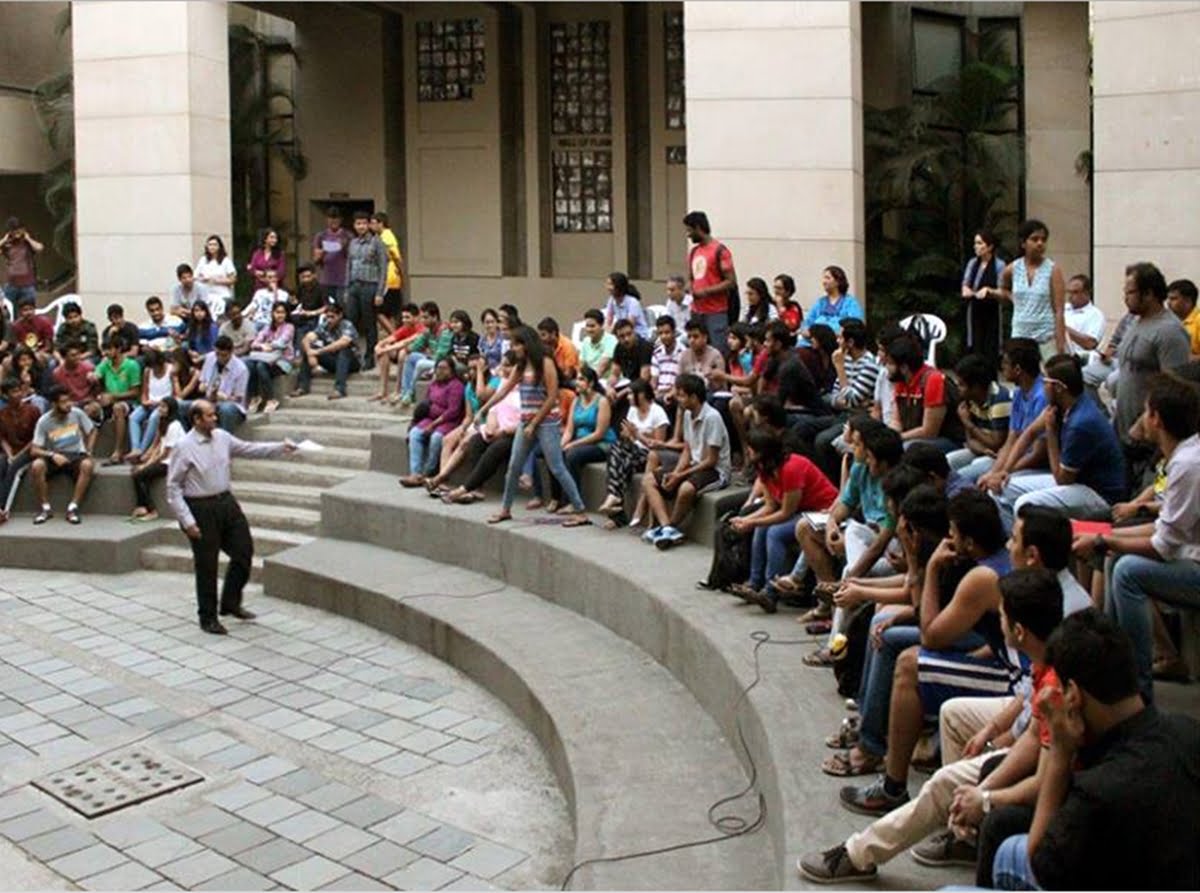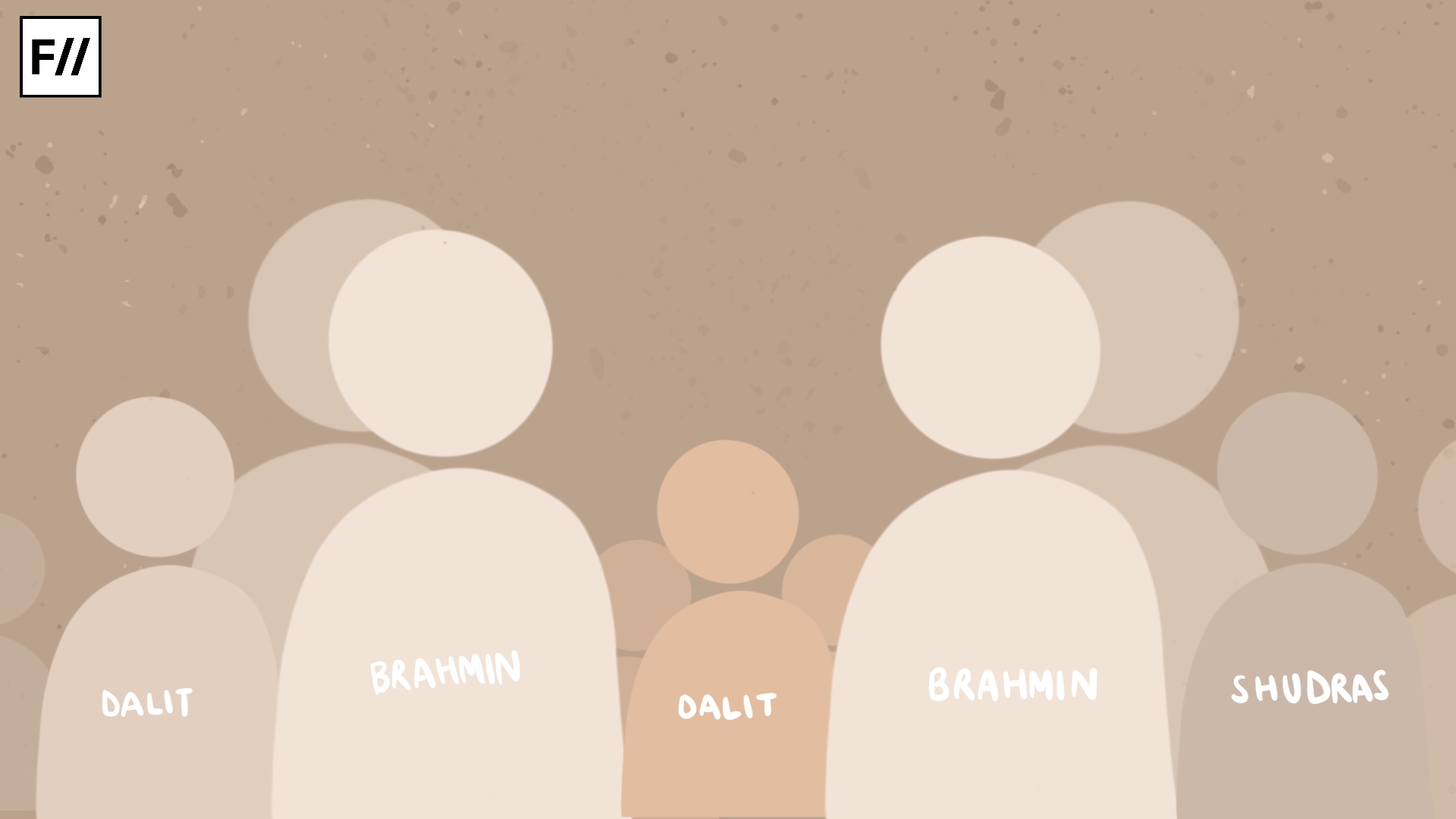Considering how “safe spaces” and terms like “not all men” have become a part of mainstream discourse, constructing a safe space for women should not be heavily challenged by feminists. Nevertheless, a project to create such a “women’s only” space failed completely in the university from where I recently graduated.
This private liberal arts university charges exorbitant fees and is also known for its strict ban on the consumption of non-vegetarian food. Because of these practices, the university largely consists of rich Brahmin and Bania students.
Also read: A Study Of Patriarchy, Power & Abuse In Romantic Relationships In Indian Campuses

I, too, come from an upper-class Brahmin household, but in the toxic environment that the university provided, even I felt alienated as someone who was comparatively not as wealthy, and as a woman unpacking abuse. Based on many conversations, I’ve come to believe the failure was because such spaces do not organically build dialogue or favour mobilisation. Instead, they foster competition and intellectual superiority, and rearticulate brahminical ideas of violence on women’s bodies.
Considering how “safe spaces” and terms like “not all men” have become a part of mainstream discourse, constructing a safe space for women should not be heavily challenged by feminists. Nevertheless, a project to create such a “women’s only” space failed completely in the university from where I recently graduated.
When Brahmanism Meets Neoliberalism: Knowledge Production, Networking and Competition
At the university, majors often pedestalised and set themselves apart by claiming superiority of their own knowledge-production, and many professors even encouraged this, asking us to “protect knowledge”. However, this was not usually inferred as a product of brahmanism; the outgroups created aren’t of students from Bahujan backgrounds since they are systematically kept away from the university. But colonising knowledge and maintaining graded inequality do form the core of Brahmanism.
We also often positioned ourselves as authorities on topics such as caste and mocked other disciplines for not being “political enough”, especially BBA students. It consisted largely of Bania students, who do not produce what Brahmanism considers “pure knowledge” and is more money and job-centric. Students who join either field usually do so because of their caste training. As Suraj Yengde points out, “Brahmin academics have advanced their careers by writing and researching Dalit experiences. Dominant-caste Indian students more often than not come with a Brahmin saviour mode.”
He also notes that this kind of “groupism” is inherent to brahmanism, and works alongside casteism. The effect of this groupism was evident in the women’s group, which was dominated by women from socio-humanities background, and rarely included those from BBA.
Despite groupism, many felt judged by their peers within their major. This simultaneous competitive celebration of one’s own group, alongside exhaustive and alienating in-fighting seemed to be institutionally encouraged through programs at the campus, wherein students undertook research led by professors. Despite the best efforts of some professors to encourage camaraderie across groups, the project became incredibly competitive and mentally exhausting.
The university and most of our privileged backgrounds train us to presume our own intellectual superiority and “merit” in comparison to others and most want that reaffirmed, especially by those in positions of power. Imposter syndrome seems rampant in universities such as this as most of are privileged in how the position we have is determined by our upper caste and class capital. Professional relationships, then, often become transactional and used for self-validation. Thus, brahaminism and neoliberal individualistic ideas of “looking out for number one” morph in this space.
Imposter syndrome seems rampant in universities such as this as most of are privileged in how the position we have is determined by our upper caste and class capital. Professional relationships, then, often become transactional and used for self-validation. Thus, brahaminism and neoliberal individualistic ideas of “looking out for number one” morph in this space.
This system ends up favouring dwij-savarna students who are good at networking, are considered “approachable”, do not have major mental health issues (or are able to hide it) and speak well. For women, this also means to favour “good women”: traditionally attractive, do not create trouble, and are able to weaponise savarna femininity. As one woman told me:
“These savarna women coming from IB schools…they are trained to interact with these professors casually, with complete confidence in what they’re saying. But I still get scared of these women with their perfect accents and jargon, and the professors they love, so how am I supposed to build these networks?”
Effect of Pervasive Neoliberal Brahmanism on Women’s Relationships
iIn opposition to this transactional and violent neoliberal brahmanism, Suraj Yengde theorises “Dalit love” as a way of survival and notes that his ancestors had to be “fortified against a system through love”. The parallel of this did not exist amongst women in this particular university as solidarity did not favour our material and economic interests, and we were driven by competitive individualism. The idea of reaching out and protecting women, regardless of personal relationships or consequences, rarely translated into real action.
For instance, when a 18-year-old was assaulted by a coach and the Internal Complaints Committee evaded official action, seniors who initially supported the woman pulled back in huge numbers when professors intervened. Many even gaslighted her, blaming her for taking the “wrong route”. This was despite the public knowledge of how the coach was a “creep” and despite their initial shock as the ICC’s response.
Another woman explained that the university encourages fragmentation of relationships amongst women as almost all interactions are mediated- be it college and film fests, academic activities, peer mentor programs and so on- and spaces of leisure are completely absent.
Because of all of this, even within women’s groups, many felt that they had to justify their position through the networks they had built and spoke of a need to associate with the “right people.” Those without such ties felt as if their opinions held less legitimacy, and felt left out of in-groups. Even within these, one woman said she felt that they were more likely to listen to each other when a professor mediated conflicting opinions.
Also read: Are College Fests A Space For Sexual Harassment On Campus
Lack of Intersectionality & Fostering Shame in “Safe Spaces”
Moreover, despite the call towards “intersectionality”, these spaces very rarely accommodate different kinds of experiences. Since women act as gatekeepers of caste, we are expected to uphold our family and community’s “honour” by disguising violence in these spaces and only deal with trauma in closed spaces, such as therapy. In the so-called “safe space”, many “woke” women also add to this, speaking of abuse as an “unsophisticated” form of violence that doesn’t happen in these social echelons, as if abuse makes the family itself “shameful”. This is coded casteism, as dwij-savarna women attempt to sanitise their spaces and demonise Bahujan men.
The interrelatedness of gendered trauma and one’s class-caste backgrounds also makes it difficult for lesser privileged women to speak of their own experiences: “With people you know, friends or especially with men in your family, unless you’ve completely shunned them, there is a certain amount of guilt which comes with being associated with (your abuser)….also if I went into more details related to my family I’d have to explain my financial differences as opposed to that of other women in the class,” said one female student. When she came close to addressing financial concerns, fellow feminists were surprised and unable to empathise with it, forcing her to downplay the matter. They were often also dismissive of her wanting to save money because of the presumption that she would be affluent.
She spoke of how the “unity on the basis of gender” dissipated as other differences, and the cognitive dissonance between people’s academic personas and real life became apparent. For instance, a woman who used to extensively talk about women’s labour rights was underpaying the domestic worker at her house.
“I started noticing small ways in which she would pass off her inherent caste disgust for other things…” Women around her would avoid public transportation, cheaper hotels, citing caste-coded terms such as “hygiene” or “smell”. Jain and Brahmin women around her who spoke extensively about food politics would always be “more comfortable” in expensive, vegetarian, especially western, restaurants.
She also spoke about how, for a lot of women, their feminist stances conveniently reaffirmed their religion or family. “So porn or sexualisation was at first bad because of what their parents told them, but now it is because it exploits women.”
Another woman also spoke about how the group had a narrative of public, working class spaces as threatening. Therefore, when the Why Loiter movement had taken place, she was excited about the prospect of our group also taking up these spaces but confused by her own desire when, since a young age, these were the spaces she was most comfortable in; to her, the owners of “dingy” bars were often the ones who looked out for the safety of women, while groups of young, entitled oppressor-caste men who visited the bars were creepy. She also spoke about how women around her usually get very uncomfortable when she would go out at night on her own even though most of the gendered trauma she has faced was not from the hands of men in public spaces, but within private spaces. Public spaces were even a refuge from domestic violence for some.
Nevertheless, she felt as if to be considered a part of the women’s group, she had to align herself with highly sanitised private spaces, and against the apparently “dirty” public spaces.
Despite the fact that “bro culture” made spaces within the college inaccessible, we were hyper-fixated with spaces occupied by working class people. One woman noted that many even avoided living on the ground floor of hostels as they didn’t want to be “close to workers” and presuming that male, bahujan workers who passed by would gaze at them. At the same time, many supported known oppressor-caste harrasers rather than other women.
Thus, dwij-savarna feminism is different from white feminism, atleast as I have seen it. Instead of just centering dwij-savarna/white women, it reshapes the nature of feminism into something competitive, individualistic and self serving, making radical solidarity inaccessible.
Neelima Mundayur is a freelance writer and video editor. She is currently pursuing an MA in Sociology from Delhi University. She can be found on Instagram and Twitter.
Featured image source: Shiksha




